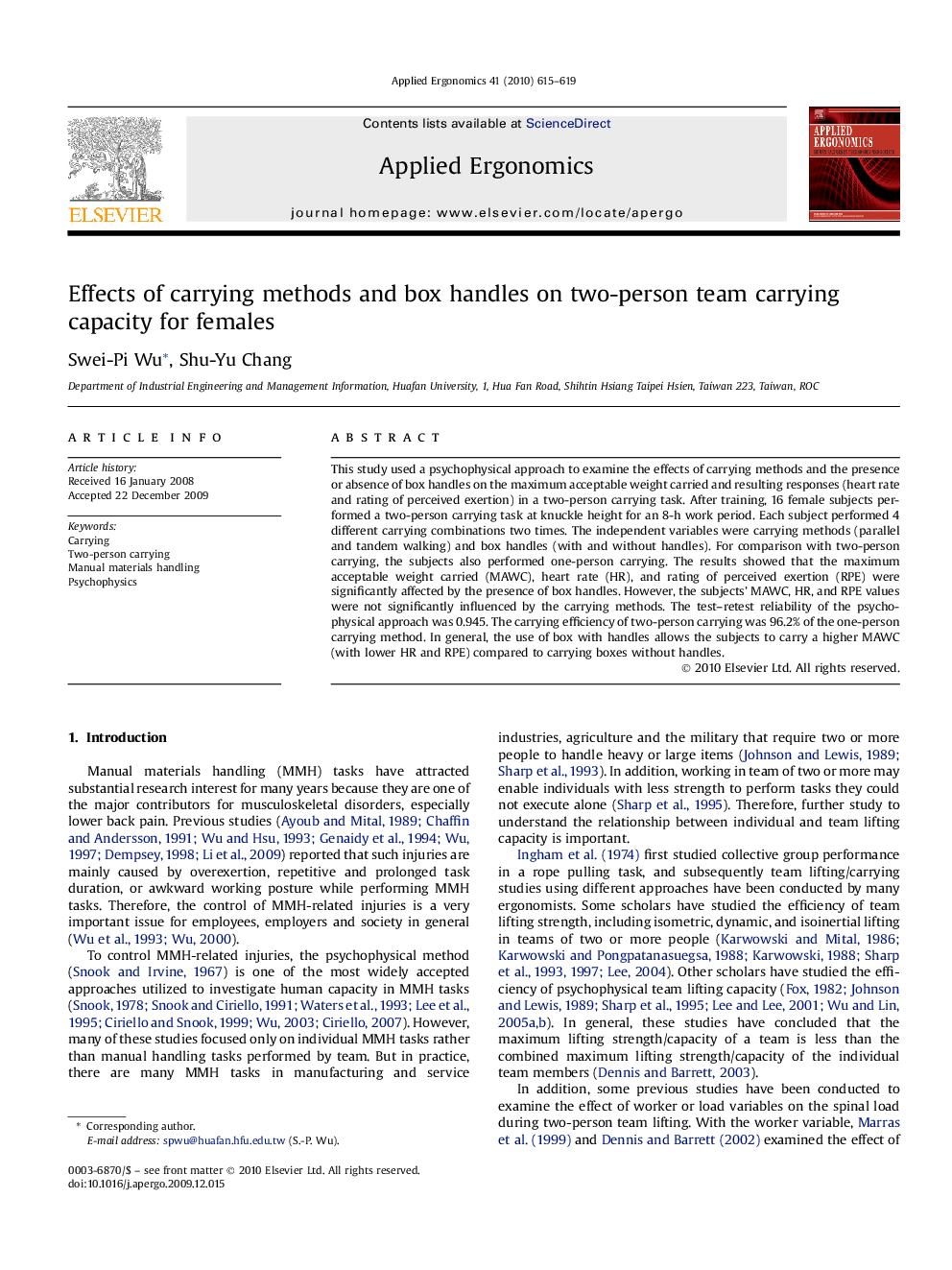| Article ID | Journal | Published Year | Pages | File Type |
|---|---|---|---|---|
| 548621 | Applied Ergonomics | 2010 | 5 Pages |
This study used a psychophysical approach to examine the effects of carrying methods and the presence or absence of box handles on the maximum acceptable weight carried and resulting responses (heart rate and rating of perceived exertion) in a two-person carrying task. After training, 16 female subjects performed a two-person carrying task at knuckle height for an 8-h work period. Each subject performed 4 different carrying combinations two times. The independent variables were carrying methods (parallel and tandem walking) and box handles (with and without handles). For comparison with two-person carrying, the subjects also performed one-person carrying. The results showed that the maximum acceptable weight carried (MAWC), heart rate (HR), and rating of perceived exertion (RPE) were significantly affected by the presence of box handles. However, the subjects' MAWC, HR, and RPE values were not significantly influenced by the carrying methods. The test–retest reliability of the psychophysical approach was 0.945. The carrying efficiency of two-person carrying was 96.2% of the one-person carrying method. In general, the use of box with handles allows the subjects to carry a higher MAWC (with lower HR and RPE) compared to carrying boxes without handles.
